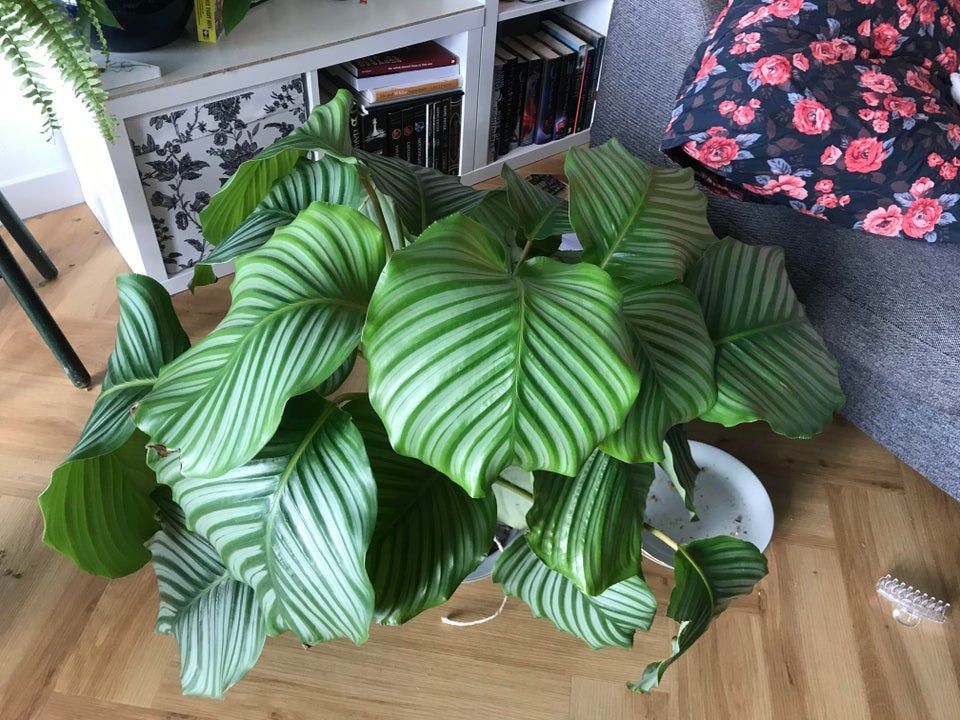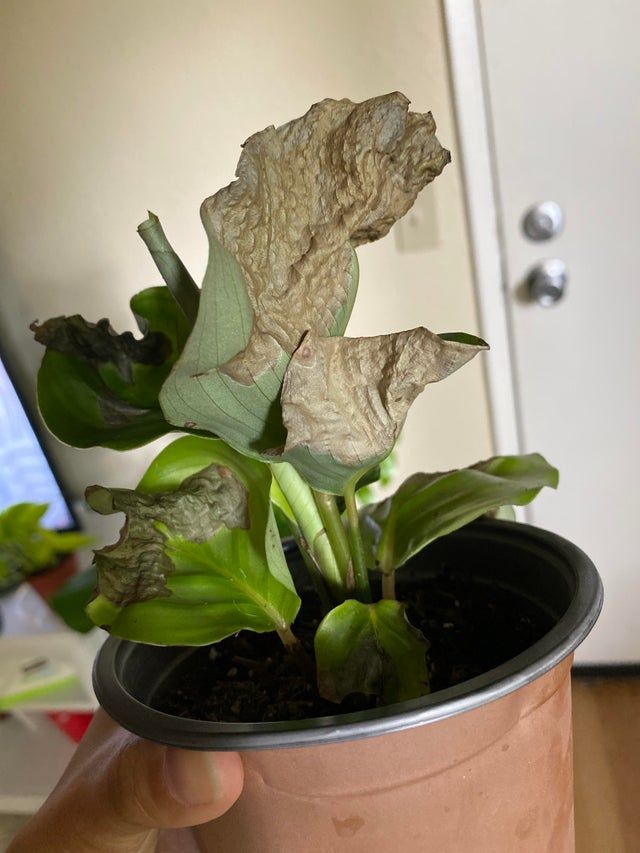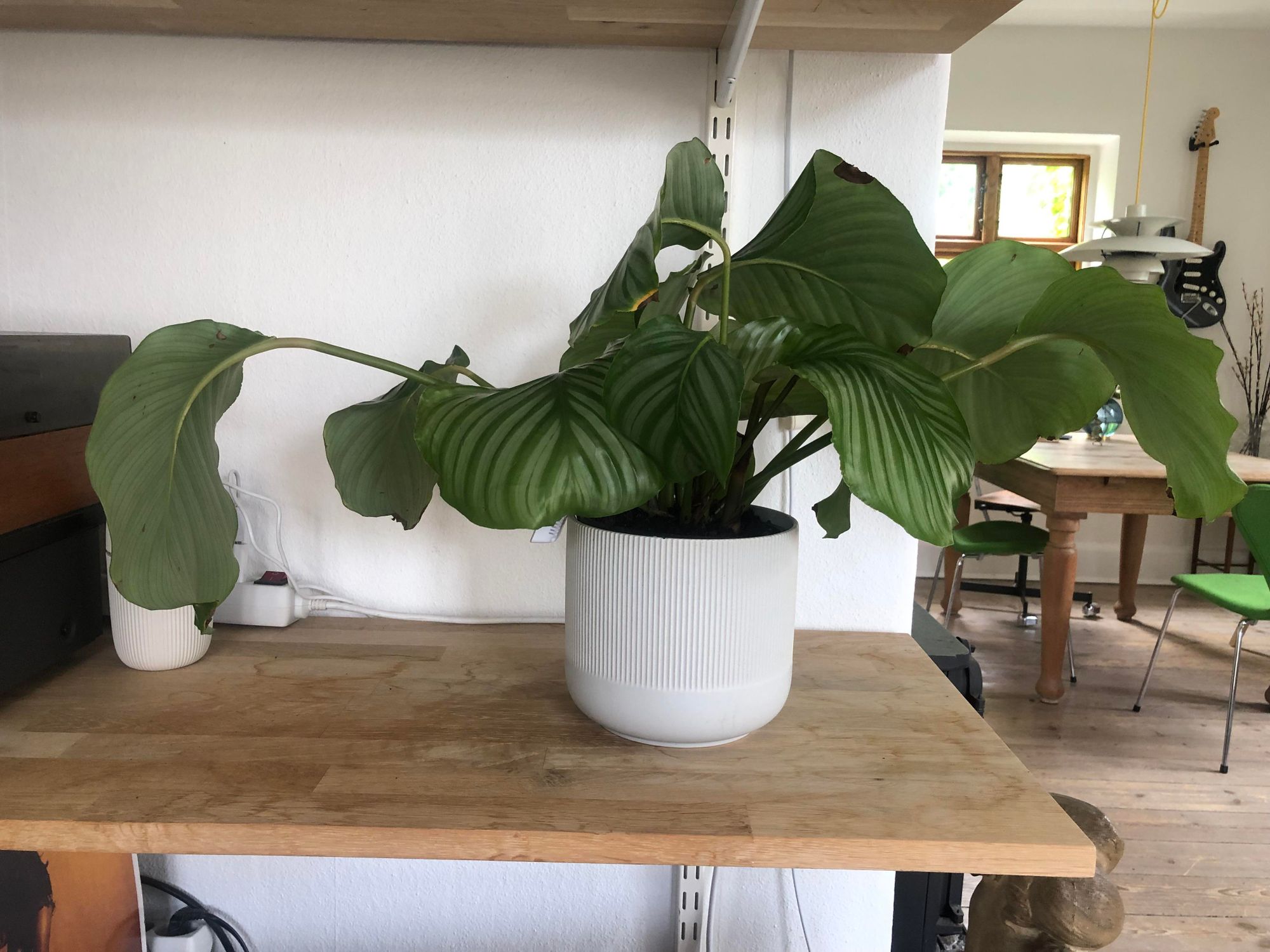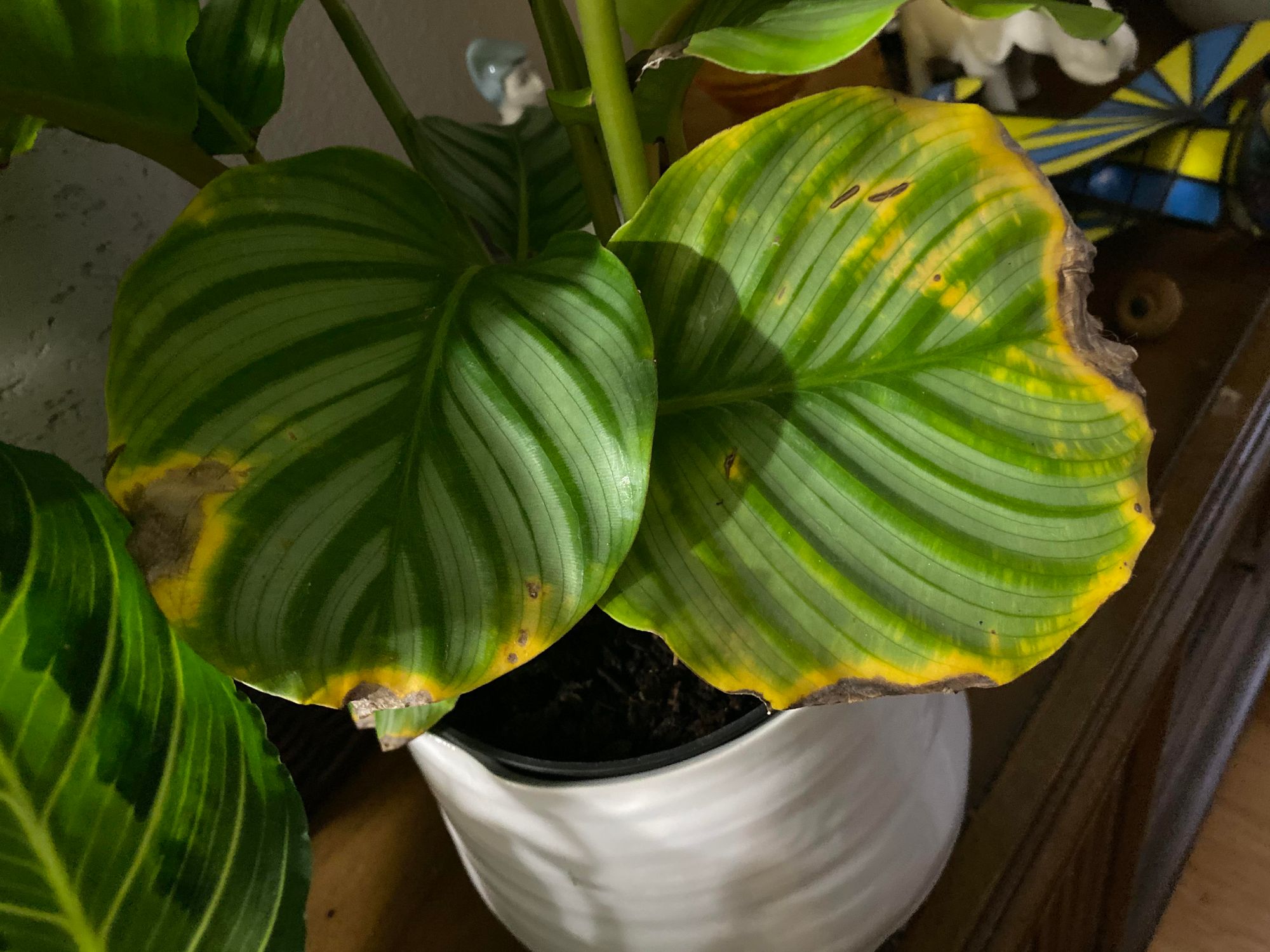How to treat your Calathea Orbifolia for Pests and Diseases
Humid, damp growing conditions keep this calathea vibrant. However, it also means they are prone to quite a few fungal diseases and insect infestations. In this guide, I will explain the most common pests & diseases that Calathea Orbifolia suffers from and how to treat them before it's too late!

Caring for your Calathea Orbifolia is no small challenge. Whether the leaves are drooping, growth is halting, or you just want to make sure the exquisite beauty remains constant. It is hard work.
Humid, damp growing conditions keep this calathea vibrant. However, it also means they are prone to quite a few fungal diseases and insect infestations. In this guide, I will explain the most common pests & diseases that Calathea Orbifolia suffers from and how to treat them before it's too late!
What diseases and pests do Calathea Orbifolia suffer from?
Diseases
Damp conditions are ideal breeding grounds for fungus to begin forming on your calathea. Powdery mildew and leaf-spot are also common but are relatively easy to notice (the clue is in their names). But by far and away, this plant is most susceptible to root rot.
Pests
Leaf suckers like thrips can be worryingly common. The Orbifolia’s large, luscious leaves naturally attract other inset varieties like aphids, mealybugs, and whiteflies. Some owners also experience issues with gnats, usually because of perpetually moist soil.
How do you spot signs of disease and pests on Calathea Orbifolia?
Fortunately, each of the issues above has tell-tale signs that an experienced eye will pick up on right away when caring for your calathea. Diseases often present themselves in Calathea Orbifolia through changes in leaf colouration and structure. So if you notice a dramatic shift in leaf colouration, it's likely something is wrong.
Root rot, for example, will cause the leaves of your plant to rapidly yellow, the base to rot, and growth to be stunted. If you suspect root rot has taken hold, have a peek at the roots. If they sport a yellow tinge, you're safe from root rot. But if they're brown and mushy, take action immediately. Root rot is most often caused by overwatering, so make sure you're watering little and often. You may also see mould begin to form if you're overwatering. While harmless, it can ruin the beauty of your calathea.
Pests have their own unique calling cards, which are pretty diverse. Spider mites, for example, will leave tell-tale webbing between the leaves and prefer warm, dry conditions. You may need to up the humidity if these guys appear.
Consistently moist soil, on the other hand, might attract fungus gnats. You can spot these tiny fly-like pests hopping about and crawling over the surface of the potting soil.
For thrips, look to the leaves again. You'll likely find dark brown discolouration and yellow areas appearing. These unwelcome visitors will hang around for about 45 days and dump their eggs into the soil beneath them.
Everyone has heard of aphids; the sole reason wasps are to be tolerated on this planet as their voracious predator. Aphids are attracted to the new, soft growth of your houseplants. Get up close for a look along the young stems and leaves of your plant, and you might spot tiny green, black or gray bugs. Aphids will cause new growth to curl, distort and discolour. You might find honeydew spattering off the plant onto your furniture. That's an aphid's sticky excretion. Nice, right?

How do you treat Calathea Orbifolia for pests and disease?
Prevention trumps cure every time. Regularly checking for discoloured areas, webs, and other signs of infestations or fungal diseases should be a regular part of your routine when caring for your calathea. At the first sign of any unwelcome visitors, we recommend using neem oil or a horticultural spray as directed. The neem oil will act as a significant barrier and has the added benefit of making those gorgeous calathea leaves shimmer like tranquil lake water.
As most diseases and pests are either caused by or attracted to overly damp conditions, it’s good practice to let the topsoil around your calathea dry before watering. Some owners find that sprinkling sand over the surface helps—sand dries quickly but is porous enough to allow the water to get to the soil and roots beneath.
If it’s too late for prevention, we advise changing the top 2-3 inches of topsoil before moving onto further treatments. This makes sure you’ve gotten rid of any nasty eggs that are hidden in the sand, like from thrips. You might try mixing a silica product into the topsoil to interrupt lava lifecycles and kill them off. Make sure you use a safe, food-grade diatomaceous earth.
If all else fails, we’ve seen some owners have great success by using predatory mites as a treatment. Don’t worry—they’re only predatory to the infestations. You can buy tubs containing around 50,000 mites that will crawl up the stems of leaves and go after any pests. Imagine them as your own private army. It can look unsightly (kind of like your plant has dandruff), but at this stage, you have to do what you have to do.
Common Calathea Orbifolia problems
Why are my Calthea Orbifolia’s leaves drooping?
Don’t be alarmed—leaf droop happens naturally during the day with calathea. It’s part of why they’re called “prayer plants.” However, if the drooping is consistent, make sure to check the soil. If it’s dry lower than 2-3 inches, your plant needs more water and humidity.
Here's a Redditor's example of a Drooping Calathea Orbifolia

Why are my Calathea Orbifolia’s leaves fading or turning brown?
Calatheas need lots of diffused light and should avoid direct sunlight. Direct sun is likely the cause of fading, and you may lose those striking markings. In extreme cases, the leaves can burn under direct sun. Make sure your calathea is out of harsh sunlight, ideally by a North facing window.
Brown spots may also be caused by insect infestations, such as thrips. When caring for your calathea, make sure to check for signs of infestation and treat accordingly.
Why are my Calathea Orbifolia’s leaves turning yellow?
Calathea are fussy, especially when it comes to watering. If yours is showing signs of yellowing, you may have a few problems. First of all, avoid using tap water—the chemicals used as part of the treating process can harm your plant. Try rain or distilled water where possible. Another cause may be over-watering. Think little and often when watering your calathea, and make sure it has lots of drainage. Be sure to check for root rot, too.
Why are the tips of my Calathea Orbifolia leaves turning brown?
Some owners like to use leaf shine to enhance the natural sheen of some plant’s leaves. Calathea are fussy plants by nature, so avoid using conventional leaf shine on them. Instead, make sure to wipe their leaves with a damp cloth to remove dust and keep them looking fresh. If you’re wary of pests, a light coating of neem oil will help form a protective layer that won’t damage your plant’s leaves but also gives that coveted glossy look.
Here is an example from Reddit :

If you like to learn more about the Calathea Orbifolia plant, click here to see our full care guide for the Calathea Orbifolia.